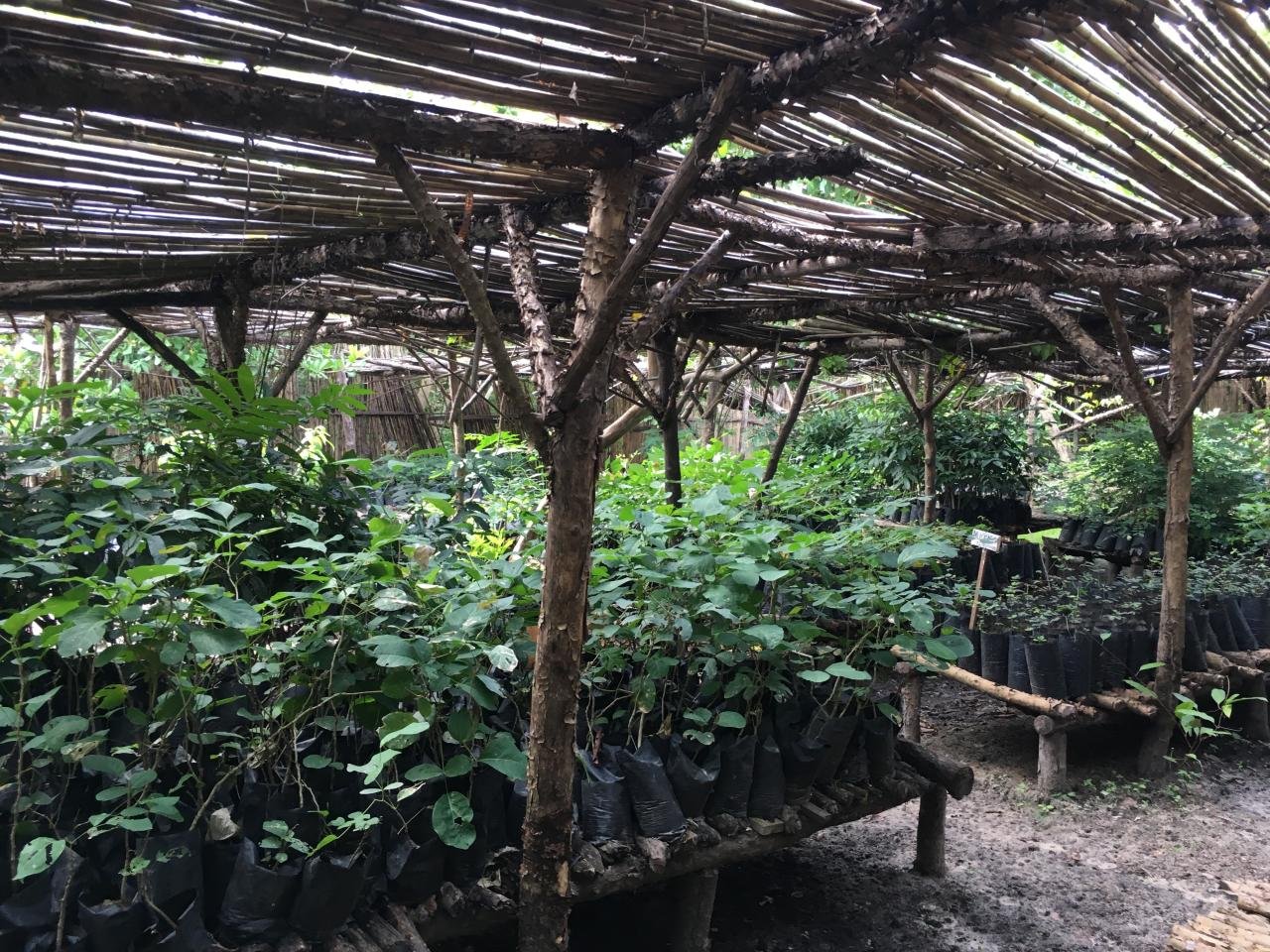Tree Planting Project
A bench full of Missanda, Erythrophleoum suavolens, traditionally used for marine construction, it is an indicator specie in the Coastal Miombo woodland.
Trees are an important tool in helping to improve air quality and planting more trees can greatly benefit the planet. However planting trees to help combat the effects of deforestation and shifts in climate is not only about numbers, it is also about creating a longterm relationship with the trees as they grow to maturity. The Mezimbite Forest Centre fosters proper land stewardship and the careful nurturing of the saplings to ensure that the trees that are planted live to out-survive us. In the dry tropics where Mezimbite is situated, young trees are especially vulnerable to predation and fire. As such the first three to four years of their growth require extra care.
- - -
“Trees serve in a broad and complex role, helping to mitigate the effects of the climate crises. They can improve air quality through carbon storage and their ability to transform energy and water. Next Breath chose to join forces with the Mesimbite Forest Centre due to their long term commitment to the trees that occupy the land that they steward.”
Lorie Karnath, Founder & President, Next Breath
This is one of the reforestation regimes after three years, with trees and in this case a bed of thriving beans, you may note a few exotic species like the Papaya and Teak have sneaked into the mix to provide more diverse food and commercial wood crops a little faster than the rigorously indigenous mix used in more sensitive areas.
Please help Next Breath with the Mezimbite Forest Centre tree planting project.
Next Breath is helping the Mezimbite Forest Centre with their forest restoration systems planting trees in the heart of Mozambique's Miombo Biome. It is known that trees can help improve air quality through carbon capture, the role of trees however in helping the planet is far more consequential than carbon storage. Dependent on where they are located, trees provide a crucial means for regulating global and local temperatures. The capability of trees to physically transform energy and water helps to mitigate heat, protecting against drought, storms, heat and flooding, and provide moisture in the air an important factor in combatting air pollutants.
Angelina's nursery at Mezimbite. It is a model used in community areas constructed by hand entirely of local materials which will degrade back into the earth after about 5 years, when it has completed the task of re-establishing about 12 500 trees per year within walking distance.
To help ensure the safety of the plantings during this especially vulnerable period they are sown amongst organically grown food crops. In this way the trees are protected by companion plants until such time that they can look after themselves. The trees help the crops by fixing nitrogen. Once the trees have seasoned and make too much shade for the food crops to be productive they are less at risk, so the growing of food crop/forest mix moves to restore another area.
Approximately 20 acres of tree planting can initially house about 8000 trees, these are culled after seven to ten years as required to ensure optimal conditions for maximum growth. During this period it is estimated that each 20 acre planting area will sequester around 10-1 200 tons of carbon.
An abandoned slash and burn wasteland, became Maria's nursery about 15 years ago. The background are well established Panga Panga (Millettia stuhlmanii, a precious hardwood) and Massassa (Brachystegia spiciformis, The k'swahili name Miombo is the most common tree in the system and what the biome is named after), and the foreground Meguza (Bombax rhodagnaphalon) saplings, a riverine specie providing Red Kapok for upholstery as well as edible oil seeds.
"Working alongside the Mezimbite Forest Center is essential to us, at Next Breath. We all need to actively do our part to curb climate change and clean the air we all breathe. We are committed to taking concrete steps, planting one tree at a time."
Xavière Masson , Co-Founder, Next Breath
“Unlike humans, who show their signs of aging with wrinkles or worsening eyesight, forests may get old, but they don't get weaker.”
On top of the benefits to biodiversity and the climate, some forests age in ways that diminish the risk of catastrophic fire. That’s why protecting old-growth and mature forest is just as important as planting new trees, argue environmental scientists Norm Christenson and Jerry Franklin. (Politico | 6 min read)






